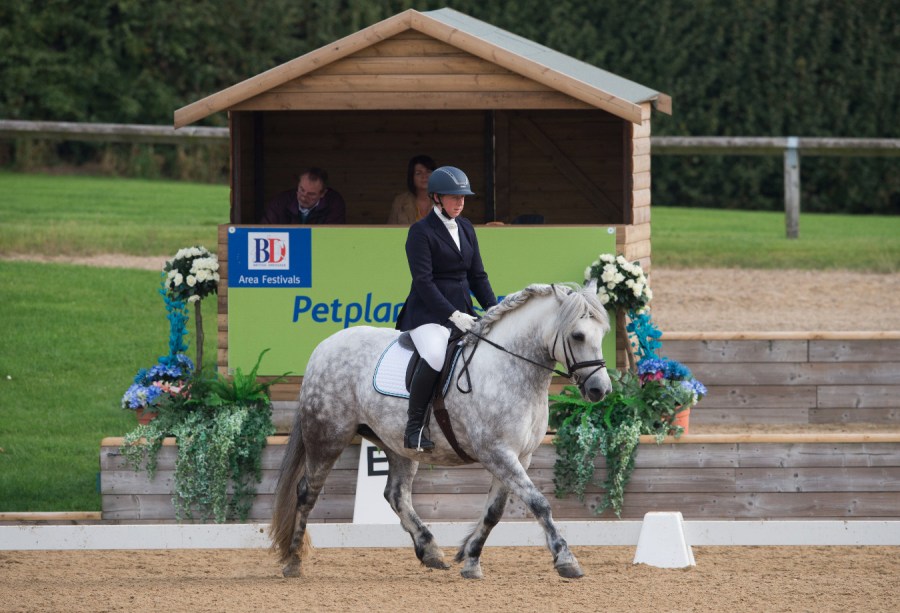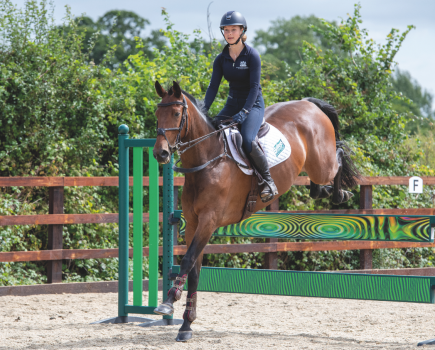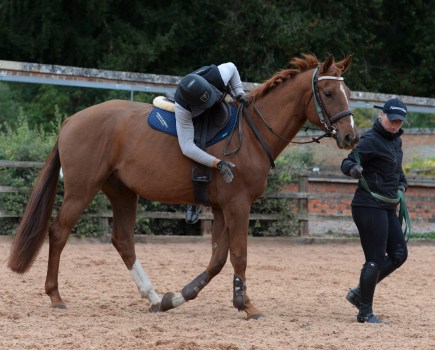In partnership with Petplan Equine
Whether you’re aiming to ride your first affiliated dressage test or are a regular competitor looking to improve your scores, you’ll want to earn every mark you possibly can from the judges — and you’ll want to enjoy yourself at the same time.
In the video below, international grand prix dressage rider and trainer Charlie Hutton watches Clare and Finn ride through a Prelim 19 test. He explains what the judges are looking for, what the duo is doing well and where they can improve, and hopes it will inspire you to get out there, go competing and have the confidence and belief in yourself that you can do it too.
First impressions
“First impressions are everything: the rider and horse need to be in a nice balance and look like a good match,” says Charlie.
“At prelim level, the overall picture needs to be nice. Your lines need to be accurate and the exercises need to be performed correctly.
“The scales of training are rhythm, suppleness, contact, impulsion, straightness and collection — and that’s what your test is being judged on. The judge is there not to criticise you but to assess your way of going in comparison to the rest of the class.”
Charlie notes that exercises are performed on both reins.
“The judges will also take into account whether the horse is the same on both sides,” he explains. “You can see that [Finn’s] balance on the left circle is slightly better than his balance on the right circle, and that will get taken into account [when judging].”
Judging the walk
Walk is important, especially the extended walk which counts for double marks.
“We’re looking at the regularity of the walk. Is it four beat? Can you see a difference going into the extended walk: is the horse stretching and seeking the bit?” says Charlie.
“This horse could have a little more ground cover and you can see that occasionally he needs to be a little more on the rider’s aids.”
Transitions
When Clare moves Finn back into trot and then asks a canter transition, the change could be neater.
“[The trot] needs a little bit more impulsion,” assesses Charlie. “That manifests into the transition and there was a loss of balance, but she went into canter; she’s forwards, on it and ready to go.
Training tip: improving transitions
“I try to imagine that [transitions] are indicators of what your balance is like within the pace that you were in,” explains Charlie. “So for example, if you are in trot and you’re going into canter, perhaps the canter transition comes a little bit hollow which is an indicator that the horse wasn’t using his back.”
Charlie suggests two ways to work on sharpening your horse’s transitions:
- Play with transitions within the pace. “Bear in mind that horses carry two thirds of their bodyweight on their forehand and one-third on the hindquarters, so it’s about making sure that the horse balances not only himself but also the weight of the rider more evenly into the centre of gravity,” advises Charlie.
- Count the number of strides. “This could be a walk-trot transition and making sure you’re doing eight walk strides or four strides. So often when we’re riding it’s actually really hard to concentrate and our mind starts to wander, so counting is a really great way to focus your mind,” states Charlie.
Overall picture
Charlie says Clare and Finn’s overall picture is consistent, which judges like to see.
“This combination’s balance doesn’t alter and the frame’s not ducking and diving. It’s consistent with uphill tendencies and the poll is mostly the highest point with the nose on the vertical and the horse is thinking forward. And that is really the most important bit — as long as the horse is thinking forward the rest can take care of itself.”
Responsiveness
In order to develop a horse’s responsiveness to the aids so that your horse is more sensitive and refined to the rider’s aids, you really have to know your horse’s natural reactions and know your horse well, says Charlie.
“So have a conversation with your regular coach and discuss how you can develop more sensitivity, then trust your instincts and be brave enough to use a smaller aid,” he continues. “When you use a smaller aid you might get some miscommunication, but don’t worry if mistakes start creeping in because that’s just part of the training process.”
Believe in yourself
Charlie hopes that his advice will help you feel more confident about competing in dressage and even aiming at a Petplan Equine Area Festival qualifier.
“I hope that this will give you some inspiration, motivation to be brave, be bold and actually own it and go out and enjoy the process of competing,” says Charlie.
“So often the idea of competing is more being judged by others but do it for you: do it for your reasons, for the love of your horse and your partnership. Good luck!”
Look what’s inside the latest issue of Your Horse









